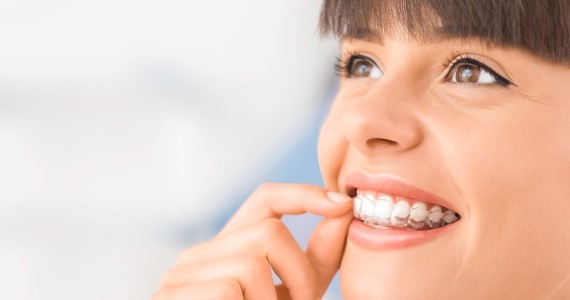Tooth Whitening: Types and Risks
This World Smile Day, don't let stained teeth be the cause of your frown

Discuss with Your Dentist Which Whitening Options Are Best for You
After nearly a year of remote communication, many people are excited to return to in-person interaction. However, many might be hesitant for in-person interaction because they may not look the same as they used to: weight loss/gain, hair loss, skin changes, the at-home haircut that is taking longer than expected to grow back, or stained/discolored teeth. This may lead to insecurity, and though many of these things may take some time to return to normal, it is possible to get your pearly yellows back to pearly whites in almost no time at all!
There are two types of tooth discoloration:
- Intrinsic stains, which are below the tooth's surface (dentin layer), are commonly caused by excessive fluoride, certain medications, or trauma to the tooth.
- Extrinsic stains are on the outermost layer (enamel) of the tooth and can be caused by smoking, diet (cola, coffee, berries, or wine) and aging.
While some DIY tooth whitening procedures posted on social media may seem cheap and effective, they can often be harmful to the teeth, gum, and surrounding tissues.
Whitening Types
Any products that remove stain or discoloration from the tooth can be classified as a "whitening" product. They are available either over the counter or through the dentist:
- Whitening Toothpastes are affordable and available over the counter. They consist of baking soda, abrasives, or chemicals used to remove surface stains from the teeth. The process can take a few weeks to see results.
- Over-the-Counter whitening kits can be strips, trays, whitening pen, or LED whitening. They generally consist of carbamide peroxide or hydrogen peroxide in the form of a gel that is directly applied to the teeth and designed to remove intrinsic stains. For best results, follow the product manufacturer's instructions. The process can take up to two weeks to see results.
- In-office whitening procedures involve sitting in a dental chair up to an hour. The dentist will prepare your teeth and gums, and administer the treatment according to the product manufacturer's recommendation. The procedure typically involves apply the whitening gel, shining an LED light, rinsing the gel and repeating up to three times. The shade of your teeth is usually recorded before and after the procedure to show the difference. In-office whitening procedures are expensive, but results can be instant.
- Take Home Kits generally consist of a custom tray and syringes. The process requires two office visits for a custom tray. At the first appointment, the dentist will take an impression of the mouth and send it to the lab. The patient will return for a second appointment where the dentist will fit the custom tray and review instructions. Results can take up to two weeks.
Whitening Risks and Side Effects
Risks and Side effects for whitening products can last for several days and may include:
- tooth sensitivity
- mild irritation of the soft tissue in the mouth (lip, gums, cheeks, or tongue)
- white spots
- chemical burn of the soft tissue in the mouth (lip, gums, cheeks, or tongue)
Whitening should be completed under your dentist's supervision to ensure the desired result is achieved.
Whitening Limitations
Be mindful that there are limitations to teeth whitening. The following cannot be whitened with any products including DIYs:
- fillings
- crowns
- bridges
- removable partials
- dentures
Consult with your dentist to see if you are a good candidate for tooth whitening before investing in any whitening products, your dentist may recommend holding off a restorative treatment plan until after whitening your teeth.
Insurance Coverage and Teeth Whitening
Most dental insurance plans do not cover cosmetic procedures. Teeth whitening is considered a cosmetic procedure and is categorized under Section 7 General Exclusions - Things We Do Not Cover in the benefit brochure. Discuss with your dentist the best whitening option available for you.






